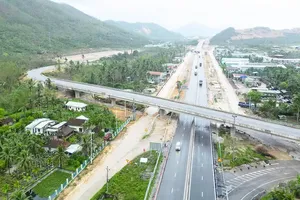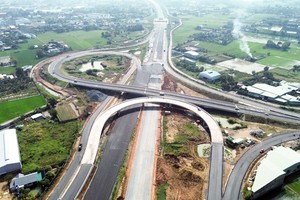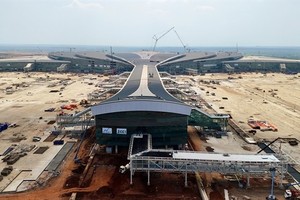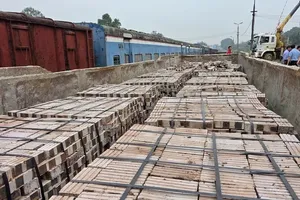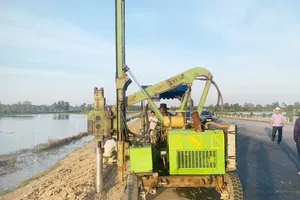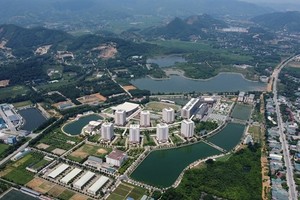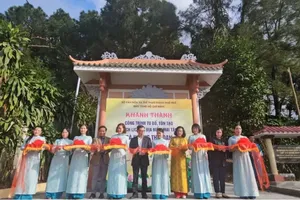The rising water levels in rivers in Hanoi and other areas in the Northern region due to floodwaters from upstream, have led to increased pressure on the dyke system. Authorities and local residents have joined hands with determination to protect dykes.
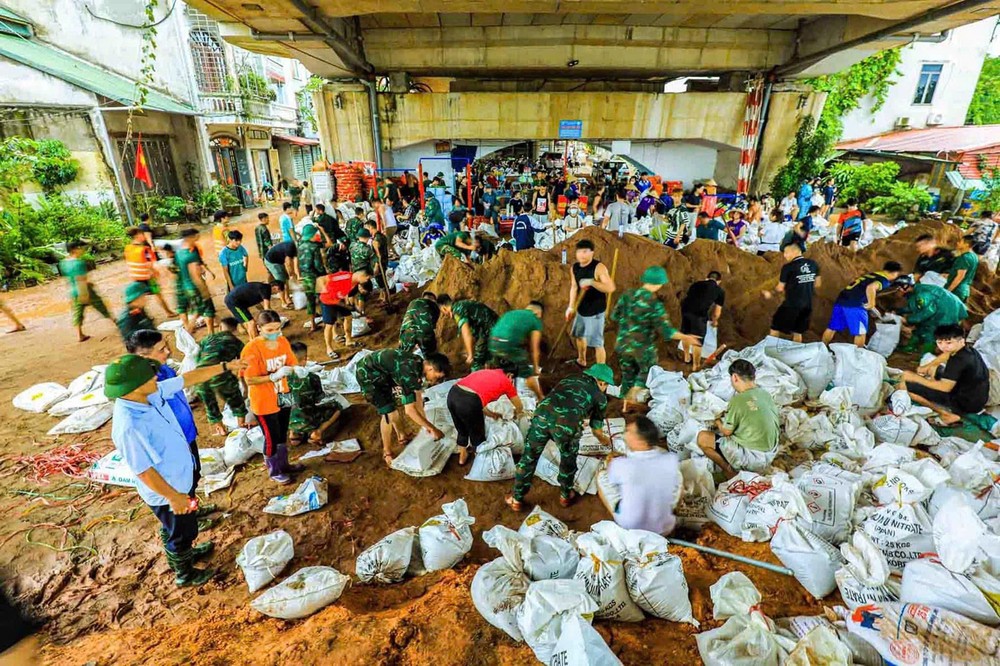
From the night of September 10 to the morning of September 11, the water of the Cau River rose and overflowed the dyke in Soc Son District, the water of the Red River overflowed the dyke in Hanoi’s Gia Lam District.
By the afternoon of September 11, the water of the Tich River overflowed the dyke in Thach That District, the water of the Bui River also flooded Chuong My District of Hanoi.
Throughout the afternoon and into the night of September 11, numerous dwellers in Ngoc Liep Commune of Quoc Oai District vigilantly monitored the dike and water levels due to a breach in the left dike of the Tich river.
In Nam Dinh Province, the river water also breached the dike encircling Y Yen District.
In several other areas, people and emergency teams hurried to defend the dike. On the night of September 10, residents fled as the Cau River overflowed the dike in Da Hoi village in Hop Thinh Commune of Bac Giang Province’s Hiep Hoa District. The People's Committee of Hiep Hoa District reported that from the afternoon of September 10, rescue teams worked tirelessly to fortify and safeguard Da Hoi dike. Unfortunately, by evening, a 30-meter section of the dike had been breached.
Lieutenant Colonel Trieu Van Thang, Political Commissar of the Hiep Hoa District Military Command, stated that the forces guarding the dike promptly assisted the residents of Da Hoi village in relocating their possessions to higher ground and moving their livestock and poultry to safety. Accordingly, family members of over 230 households in Da Hoi village are safe.
Also on the night of September 10, a 10m section of the Lo River dike in Quyet Thang Commune in Son Duong District of Tuyen Quang Province was broken. Chairman Giang Tuan Anh of the People's Committee of Son Duong District said that the broken dike section was adjacent to Hop Nhat Commune in Doan Hung District of Phu Tho Province.
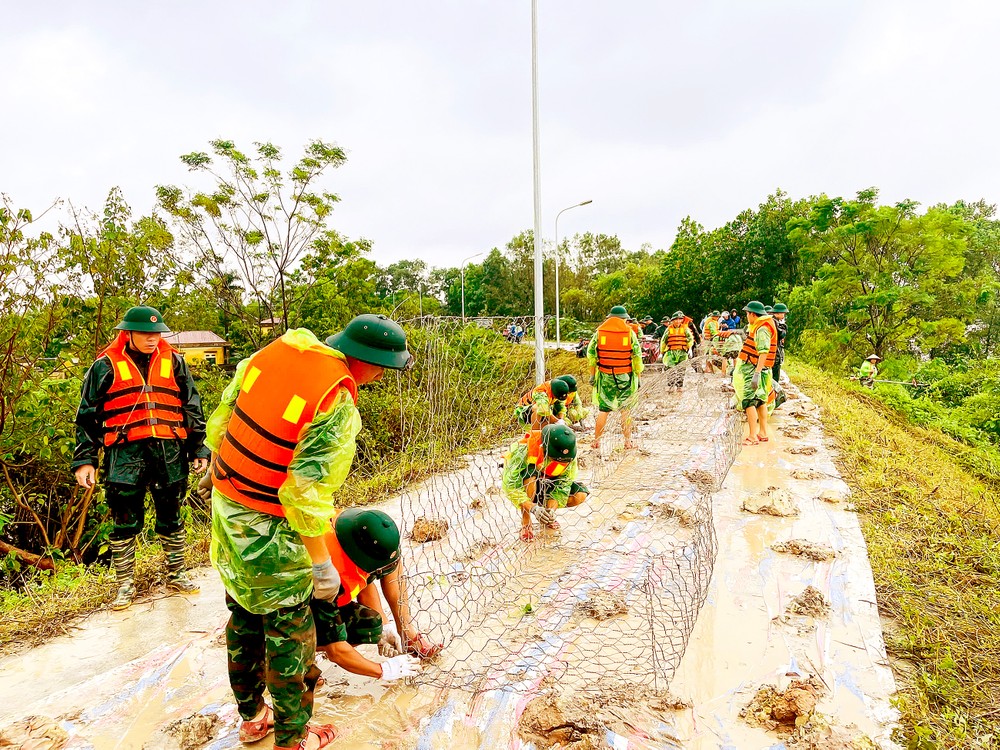
In the face of a massive flood, the emergency teams worked tirelessly in the stormy weather to evacuate residents and safeguard the dike. Throughout the night, hundreds of local dwellers joined forces with law enforcement, soldiers, and militia to transport sandbags and soil, coordinate truckloads of building materials, and operate excavators to repair the damaged dike section.
According to information from the Department of Dyke Management and Natural Disaster Prevention under the Ministry of Agriculture and Rural Development, most of the dike incidents from September 9 to September 11 were dike overflows and breach of secondary dikes (dikes protecting the outer ring of the main dike).
If the flood rises and overflows the secondary dike, it is necessary to urgently evacuate people.
In certain areas, it is essential to allow water to overflow the secondary dike to mitigate flooding and prevent sudden pressure on the main dike. On September 11 in the afternoon, the river water level nearly reached the underside of Long Bien Bridge.
Concerned about potential flooding, Hanoi residents yesterday rallied on forums and social media to gather resources like sacks, cranes, and excavators to fortify weak spots in the dikes where water was seeping through. Over 1,000 people in Quoc Oai District joined forces on September 11 to reinforce the Day and Tich rivers' dikes.
In the context of the increasingly high flood water on the Red River, in a talk with SGGP Newspaper reporters, Director of the Department of Dyke Management and Natural Disaster Prevention Pham Duc Luan said that the Red River dike is a central dike, even when the Red River water reaches the third alert level, it is still a large distance from the dike surface.
The authority responsible for natural disaster prevention and dike management in Hanoi will respond to incidents at the Red River dike based on flood frequency, rather than according to the alert level.
Speaking with SGGP Newspaper reporters, an irrigation expert who used to work at the Ministry of Agriculture and Rural Development said that 30-40 years ago, flood diversion and flood slowing areas were planned along the Red River basin.
If needed, flood water from the Da River and the Red River can be managed by diverting it to Thanh Thuy District in Phu Tho Province, Yen Lac and Vinh Tuong districts of Vinh Phuc Province, or redirecting it through the Day River in Hanoi’s Phuc Tho District to protect Hanoi's inner city. As a result, Hanoi is considered safe, and the integrity of the Red River dike in Hanoi is assured.
Asia's most powerful typhoon this year, Yagi battered Vietnam’s Northern region bringing gales and heavy rain. The capital of Hanoi evacuated thousands of people living near the swollen Red River as the water level in residential areas near the riverbanks in central districts such as Hoan Kiem, Ba Dinh, Tay Ho has risen very high, up to 1-2m. Most households have been evacuated to safety by local authorities.
